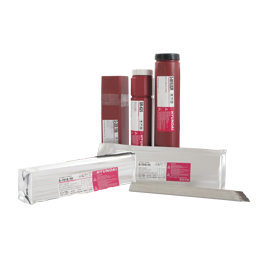ALL PRODUCT






Stick Electrodes
S-FCF

-
Caution
① The preheat temperatures vary in accordance with the size, kind and shape of the base metal. 150℃(302℉) is appropriate in general.
② Gradual cooling recommended after welding
③ Keep the weld metal length less than 50mm(2 inch) to disperse welding heat. Adopt back stepping stone or symmetry method by turns. - Purpose ① Repairing of cast iron
-
Attribute
① Machining impossible (As welded)
② Easy to remove slag
③ Preheat at 200~350°C (392~662°F)
④ Stable arc and good bead appearance

S-NFC

-
Caution
① Use currents as low as possible.
② Keep the weld metal length less than 50mm(2 inch) to disperse welding heat.
③ The preheat temperatures vary in accordance with the size, kind and shape of the base metal. 100~200℃(212~392℉) is appropriate in general. - Purpose ① Welding of normal grades of cast iron
-
Attribute
① Good crack resistance
② Preheat at 100~200°C (212~392°F)
③ Easy to remove slag

S-NCI

-
Caution
① Chip off base metal completely at the repairing part.
② There is a possibility that cracks spreads or makes holes at both ends of repairing part.
③ Keep the weld metal length less than 50mm(2 inch) to disperse welding heat. Adopt back stepping stone or symmetry method by turns.
④ The preheat temperatures vary in accordance with the size, kind and shape of the base metal. 150℃(302℉) is appropriate in general. - Purpose ① Repairing and joining of cast iron
-
Attribute
① Graphite coated electrode
② Preheat at 150°C (302°F)
